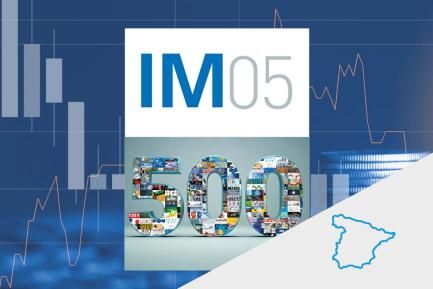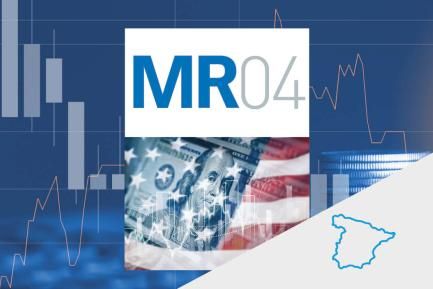
Strong recovery in Q3 dampened by the second wave of COVID-19
The economy experienced a strong rebound in Q3 following the lockdown
After falling by 17.8% in Q2, GDP advanced by a significant 16.7% quarter-on-quarter in Q3, exceeding most analysts’ expectations. Although GDP is still 8.7% below the level of the same quarter last year, this figure confirms that the economy experienced a significant revival after emerging from the lockdown that prevailed in Q2: in Q3, the economy managed to recover 58% of the level of production that had been lost between Q4 2019 and Q2 2020. The rebound was particularly strong in private consumption (20.7% quarter-on-quarter) and exports (+34.3%, driven by exports of goods). However, this recovery has some weaker flanks: some of the sectors that remain the most affected include retail, transportation and hospitality (–22.0% year-on-year) and construction (–11.0% year-on-year). Manufacturing, meanwhile, exhibited a strong recovery (the year-on-year decline moderated from –27.3% in Q2 to –4.0% in Q3).

The second wave of the pandemic indicates a difficult Q4
In recent weeks, there has been a very marked increase in the number of confirmed COVID-19 cases in Spain (around 26,000 at the end of October, some three times more than a month ago). This increase in infections has been accompanied by an increase in pressure on hospitals which has forced the authorities to impose new measures to contain the virus and to restrict mobility (a nationwide curfew, capacity restrictions, the closure of catering establishments in various autonomous communities and perimeter closures in most territories). These measures are less restrictive than those in place in March and April, but they will certainly have a negative impact on the economy in Q4. The second wave of the virus could thus pour cold water on the momentum shown by the economy in Q3. Indeed, although most of the new restrictions only entered into force at the end of the month, we have already seen a declining trend in the mobility indices during the course of October.

Consumption and the service sector, the likely victims in Q4
The PMI for the service sector showed signs of weakness in both September (42.4 points, yielding 5.3 points compared to August) and October (41.4). These are the lowest figures since May and suggest a contraction in economic activity in the sector. As for consumption, the total expenditure carried out using Spanish cards on CaixaBank POS terminals and cash withdrawals shows a decrease of 5% year-on-year during October, a 2-pp deterioration compared to the figure for September (see our tracker at www.caixabankresearch.com for real-time monitoring).

Notable recovery in the labour market in Q3
According to data from the LFS, employment increased by 570,000 people in Q3 2020 (3.1% quarter-on-quarter), driven by a significant rebound in the level of actual employment. Specifically, the number of people in employment who are not either affected by a temporary furlough (ERTE) scheme, registered as having temporarily ceased their occupational activity or inactive for some other reason (remember that, statistically, those affected by an ERTE scheme are still considered to be in employment) grew by 12.1% quarter-on-quarter (–6.9% year-on-year). In addition, the number of actual hours of work performed increased by 15.1%, in line with the rebound in GDP. While the increase in the number of people in unemployment (+355,000) was much more pronounced than in Q2 (+55,000 people), this is largely due to the reactivation of individuals who, after losing their jobs, were classified as inactive in Q2. Thus, the unemployment rate stood at 16.2% in Q3 2020 (+0.9 pps compared to Q2 2020). The labour market has followed an encouraging path in Q3, but the new restrictions will inevitably take their toll. Indeed, in October, social security affiliation already reflected a certain stagnation in the recovery. Specifically, the number of affiliates increased by +114,000, but total affiliation was –2.3% below its level of October 2019, a figure very similar to the previous month. On the other hand, the number of people affected by temporary furlough (ERTE) schemes continued to decline. At the end of October, there were some 600,000 beneficiaries of such schemes, 130,000 less than in September (3.4 million in April).

The COVID-19 crisis takes a heavy toll on the public finances
The unprecedented state action aimed at helping individuals and businesses during this pandemic is having a major impact on the public accounts. In August, the general government deficit stood at 7.1% of GDP, with a 9.0% fall in revenues and an increase in expenditure of 11.5%. This deterioration is expected to continue, bringing the deficit for the year as a whole to around 13% of GDP (according to forecasts by CaixaBank Research). The government’s 2021 Draft Budget Plan proposal which it sent to Brussels sets out a deficit target for next year of 7.7%, supported by projected GDP growth of 9.8%. The government proposes achieving this deficit through a considerable increase in both expenditure and revenues; the preliminary draft of the General State Budgets, which will be negotiated with the political parties in the next months, provides for a 17.5% increase in non-financial state expenditure, including the European funds, compared to 2020. On the revenue side, tax revenues are expected to rise (+13% versus 2020 and +4.3% versus 2019) due to the rebound in economic activity, the creation of new taxes (on financial transactions, digital services and new green taxes) and increases in others (personal income tax, a reduction in company exemptions, VAT on sugary drinks, etc.). Our forecasts foresee a slightly higher deficit in 2021 (9.5% of GDP) due to a more contained revenue projection and a somewhat less pronounced economic recovery in 2021.

Rebound in corporate debt, although it remains at acceptable levels
In Q2 2020, the debt of non-financial firms rose by 45 billion euros due to the increased liquidity requirements caused by the pandemic. It thus stood at 102.7% of GDP (+9.2 pps versus Q2), bringing it back to the levels of 2016. While a significant increase, the risks are contained thanks to the combination of the low cost of servicing the debt and abundant liquidity. Household debt, meanwhile, stood at 60.6% of GDP (60.4% in the euro area), up 4 pps from the previous quarter. This increase in the ratio, however, was mainly due to the fall in GDP. It should also be noted that the rise in NPLs remains contained, with a slight increase in August (4.75%, compared to 4.72% in July). Nevertheless, this monthly increase resulted from a decline in the balance of credit rather than an increase in the balance of non-performing loans.



